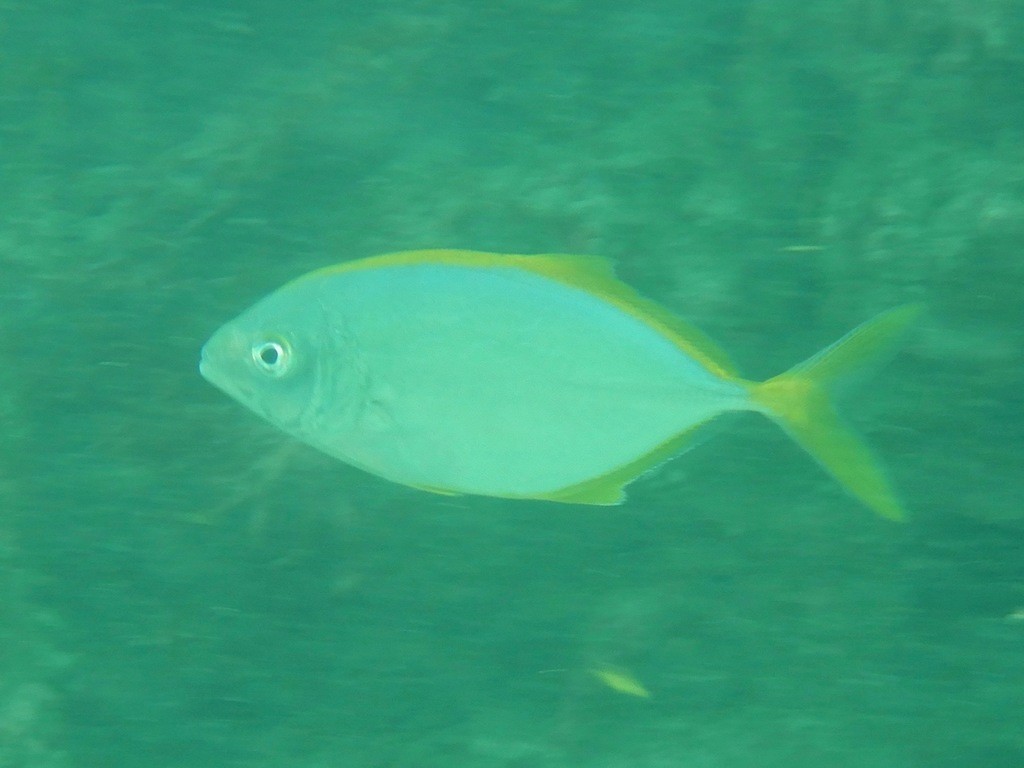Yellow jack
A species of Island jacks, Also known as Green jack, Crevalle Scientific name : Carangoides bartholomaei Genus : Island jacks
Yellow jack, A species of Island jacks
Also known as:
Green jack, Crevalle
Botanical name: Carangoides bartholomaei
Genus: Island jacks
Content
Description
 Photo By old-bean-adams , used under ALL RIGHTS RESERVED /Cropped and compressed from original
Photo By old-bean-adams , used under ALL RIGHTS RESERVED /Cropped and compressed from original Description
The yellow jack shows the typical body profile of the genus Carangoides, having a moderately deep, compressed elongate shape, with the dorsal profile slightly more convex than the ventral profile. It is a large fish, growing to a known maximum length of 1 metre (39 in), although more common seen below 45 centimetres (18 in), and a maximum weight of 14 kilograms (31 lb). The dorsal profile of the head is slightly curved from the snout to the nape, with the eye having a moderately well developed adipose eyelid. One of the major diagnostic features is that the upper jaw does not reach to the interior margin of the eye. Both jaws contain narrow bands of villiform teeth, with these bands becoming wider anteriorly. The dorsal fin is in two parts, the first containing 7 spines and the second of 1 spine followed by 25 to 28 soft rays. The anal fin is similar to the second dorsal fin, consisting of two anteriorly detached spines followed by 1 spine and 21 to 24 soft rays. The lobes of the dorsal and anal fins are slightly pronounced, and the pectoral fin is falcate, being longer than the head. The lateral line has a slight, extended anterior curve, with this curved section being longer than the posterior straight section. The straight section of the lateral line has 22 to 28 scutes, with rest of the body being covered in smooth cycloid scales, and the chest being completely scaled. The caudal peduncle has bilateral paired keels present. There are 24 vertebrae and a total of 24 to 30 gill rakers. The yellow jack is a pale yellow-green-blue dorsally, becoming silver on the underside. Juveniles show around 5 vertical bands, which fade to blotches and finally disappear altogether as the fish matures. The fins are all hyaline in appearance, often with a golden-brown tinge to them. Older fish tend to be more yellow, with large specimens having bright yellow fins.
* Disclaimer: The judgment on toxicity and danger is for reference only. We DO NOT GUARANTEE any accuracy of such judgment. Therefore, you SHALL NOT rely on such judgment. It is IMPORTANT TO SEEK PROFESSIONAL ADVICE in advance when necessary.
Scientific Classification
Phylum
Chordates Class
Fish Order
Perch-like fish Family
Trevallies Genus
Island jacks Species
Yellow jack